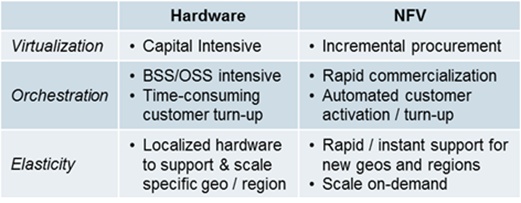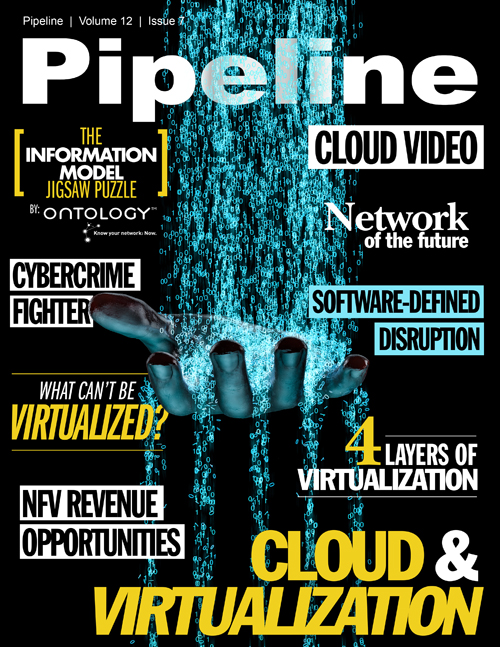NFV = New Revenue Opportunities
By: David Walters

A growing share of Communication service providers (CSPs) have embarked on strategic network transformation projects, whether it involves transitioning from legacy TDM networks to IP, undertaking an all IP network transformation, or evolving to IMS. Today, CSPs are looking to Network Function Virtualization (NFV), an industry standard that defines the architecture for virtualization of network functions to create and deliver communications services in a cloud environment.
But CSPs need to rethink their approach to Network Function Virtualization or NFV. In particular, many service providers see NFV primarily as a means to reduce costs via improved operating efficiencies and reduced capital investments. This approach would make sense at first glance. Consider how the European Telecommunications Standards Institute (ETSI) defines NFV, with its objective “to consolidate many network equipment types onto industry standard high volume servers, switches, and storage, which could be located in datacenters, network nodes, and end-user premises.”
A deeper look at NFV reveals not only cost savings benefits but also the larger opportunity to increase revenue. New sources of revenue are derived via 1) the introduction of new services, 2) enhancing existing services and 3) opening entirely new markets. In addition, for many CSPs who operate facilities-based networks, NFV may represent the most important means to leverage their existing network assets and differentiate from cloud and Over The Top (OTT) providers.
About Ontology
Ontology Systems is revolutionising how telecommunication network operators get to know their networks. We replace expensive and fragmented views of your network with affordable,
comprehensive and dynamic panoramas so you can truly know your network.
Ontology Systems was founded in 2005 by Benedict Enweani (CEO) and Leo Zancani (CTO) to radically reduce the cost, risk and effort of joining up data in the IT and network estates of
Communication Service Providers (CSPs).
CSP day-to-day operations require interaction with a huge range of extremely high-variety data, and this interaction needs the data to be joined-up in order to present a cogent
picture of the business, its assets and operations to the processes that form the CSP.
Because of the wide variety, the cost of joining the data up represents a staggeringly high proportion of CSP operational costs, and the rigidity and brittleness of present-day
solutions to the problem fundamentally limit the agility of the business, making it hard to compete against ever more nimble emergent players.
Ontology Systems' products are based on its Ontology 5 graph-search data alignment and linking platform which uses new ways of representing and storing data to radically reduce the
cost and risk associated with joining up data from multiple, misaligned sources and understanding its quality.
Ontology's Intelligent 360 for Network Operators product line employs this capability to build a comprehensive end-to-end Dynamic Network Topology Model and use it to drive tools for
Network Troubleshooting, Customer and Infrastructure Navigation and Change Management.
Ontology Systems is proud to count some of the world's largest telecommunications companies amongst its customers, including a number of Vodafone Group companies, Telenor, Telkom
South Africa and Level 3 Communications. For more information, visit www.ontology.com
Imagine New Services via NFV
Identifying new revenue opportunities starts with understanding that NFV is more than virtualization and operating virtualizing systems. One can think of NFV as having the following building blocks: 1) virtualization, 2) orchestration, and 3) elasticity.
-
Virtualization: the ability to run discrete functions or building blocks of an application within a virtual machine.
-
Orchestration: the ability to manage the lifecycle of an application including installation, deployment, configuration, and termination in an automated, repeatable manner. It includes the ability to manage the underlying infrastructure comprised of the compute, storage, and networking resources required for the application.
-
Elasticity: the ability to dynamically scale an application in or out via its individual discrete network functions.





















